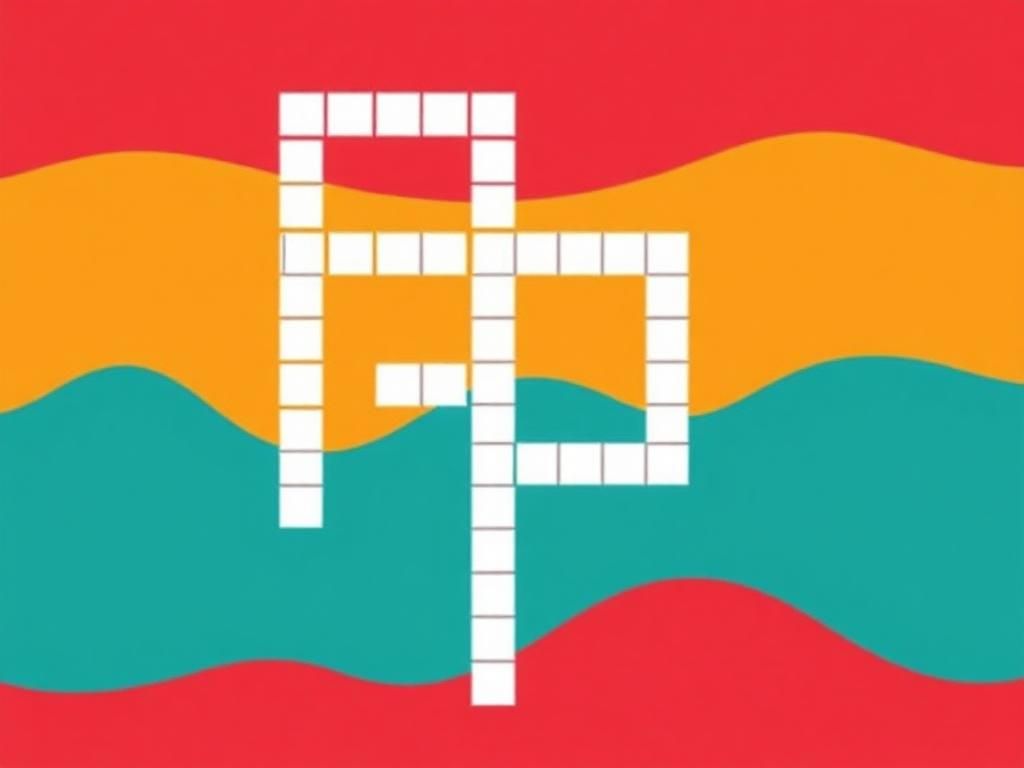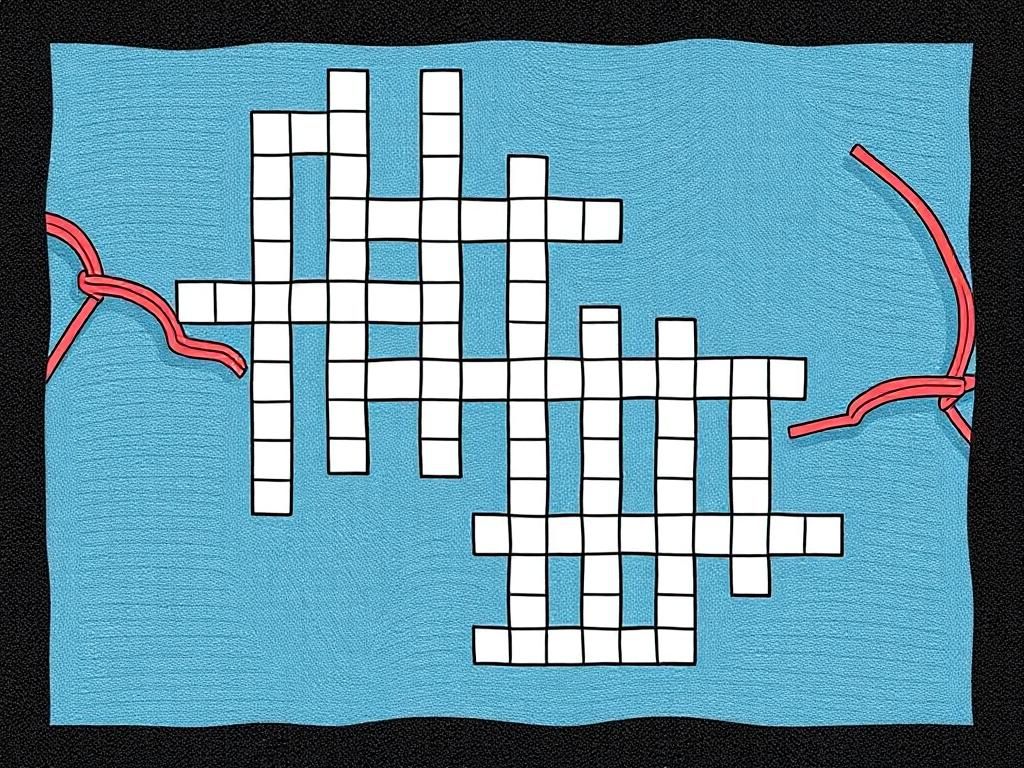Making your own strands crossword is a delightful and intellectually stimulating activity. This unique type of crossword puzzle diverges from the traditional formats, offering a fun twist that allows for more creativity and thematic depth. Strands crosswords are an innovative way to challenge yourself or others while enhancing vocabulary and promoting critical thinking skills. This article will walk you through the ins and outs of creating your very own strands crossword, from understanding the core components to best practices and practical examples.
Introduction to Strands Crosswords
Definition of Strands Crosswords
Strands crosswords are distinct puzzles characterized by their flexible structure and thematic elements. Unlike traditional crosswords that often rely on a symmetrical grid filled with interlocking words, strands crosswords break from convention, offering a more fluid design that can integrate thematic strands or unrelated clusters. This allows for creativity not just in the words selected but in their placement and interaction.
Benefits of Creating Your Own Crosswords
Creating your own strands crossword can provide numerous benefits:
- Enhances vocabulary and language skills: The process of selecting words encourages exploration of language.
- Stimulates cognitive functions and critical thinking: Crafting clues and ensuring word interconnectivity challenges the mind.
- Fun and engaging way to learn or teach topics: Particularly beneficial for educators, allowing subjects to be incorporated thoroughly and engagingly.
Understanding the Basics of Crossword Construction
Key Components of a Crossword
To create a successful strands crossword, it is essential to understand its key components:
- Clues: Varying types of clues can include definitions, puns, and cryptic hints that challenge solvers differently.
- Answers: Proper placement causes answers to intersect, which can affect the choice of words in later stages of design.
- The Overall Theme: This provides a unifying concept for the crossword, enriching the solving experience.
Tools and Resources for Creating Crosswords
There exists a wealth of tools to help you construct your strands crossword:
- Digital tools and software options: Programs such as Crossword Compiler or Eclipse Crossword simplify the process.
- Hand-drawing methods: A traditional approach that involves graph paper and pencils can certainly enhance creativity.
- Online crossword creators: Websites that offer free templates and guidance can be incredibly useful for beginners.
Step-by-Step Guide to Making Your Own Strands Crossword
Step 1: Choose a Theme or Topic
A great way to start is by selecting a theme. Popular themes include:
- Holidays: Words like “Christmas,” “Hanukkah,” or “Easter.”
- Hobbies: Topics like photography, gardening, or cooking can generate interest.
- Historical Events: Crafting your crossword around significant moments can be educational and fun.
Narrowing down specific words related to your chosen theme will set the foundation for puzzle construction.
Step 2: Select Your Words
This step requires careful consideration:
- Length of words and grid size: The size of your grid will dictate the length of your words—aim for balance!
- Creating a balanced mix: Combine easy and challenging words to cater to a diverse audience.
- Importance of word interconnectivity: Think about how each word fits within the grid to enhance overall flow.
Step 3: Design the Grid Layout
Once you’ve chosen the words, it’s time to arrange them:
- Grid arrangements: Consider whether a symmetrical or asymmetrical layout fits your theme better.
- Preventing isolated words: A coherent crossword should avoid having words that don’t connect with others.
- Sample grid layouts: Plenty of templates exist online for inspiration!

Step 4: Write Clues for Each Word
Crafting clues can be a lot of fun:
- Engaging and clear clues: Your clues should invite curiosity while offering guidance.
- Types of clues for variety: Incorporating riddles, puns, or factual hints increases interest.
- Examples of good versus poor clues: Test the clarity and engagement of your clues by iterating through options.
Step 5: Test Your Crossword
It’s essential to have others try your strands crossword:
- Encourage friends or family to solve it: Fresh eyes can uncover hidden issues.
- Gather feedback: Ask for input on the puzzle’s difficulty and clarity.
- Revise based on input: Don’t hesitate to make changes to enhance the experience.
Tips and Best Practices for Strands Crossword Creation
Maintain Clarity and Simplicity
When making your own strands crossword, clarity and simplicity are vital:
- Avoid overly complex words: Use accessible language that everyone can enjoy.
- Ensure clues are descriptive yet concise: A well-crafted clue should lead solvers to the answer without giving it away.
Incorporate Variety
Engagement can be achieved through diversity:
- Use different clue types: For engaging puzzles, mix clue types to keep solvers intrigued.
- Mix short and long words: A blend of word lengths maintains engagement.
Keep an Eye on Fill Quality
Keeping your crossword fresh is vital:
- Avoid obscure references: Your audience should relate to the clues and terms used.
- Strive for freshness in word choices: Regularly evolving your vocabulary will keep solvers coming back for more.
Examples of Strands Crosswords
Thematic Sample Crosswords
Creating themed crosswords is enjoyable and can be a tool for learning:
- Example 1: Holiday-themed strands crossword, featuring festive words like “Yuletide” or “Kwanzaa.”
- Example 2: Educational strands crossword tailored for students covering subjects like science or literature.
Analyzing Successful Strands Crosswords
Understanding what makes a crossword successful can enhance your own efforts:
- Breakdown of effective elements: Clearly defined themes, balanced difficulty, and well-crafted clues are essential.
- Lessons learned: Draw inspiration from popular crosswords and apply those lessons to your creations.
Conclusion

Recap of the Creative Process
Recapping the steps involved in crosswords helps solidify the learning. The process includes choosing a theme, selecting words, designing grid layouts, crafting clues, and testing the finished product.
Call to Action
Now that you understand how to make your own strands crossword, we encourage you to dive in. Create a puzzle that reflects your interests, share it with your friends, and join online communities where you can showcase your work and receive valuable feedback.
Additional Resources
Recommended Books and Guides
If you’re interested in delving deeper, check out some resources that cover crossword construction:
- “The New York Times Crossword Puzzle Dictionary” for vast word options.
- “Word Play: A Playbook for Creating Crosswords” provides insights and techniques.
Online Communities and Forums
Engaging with like-minded individuals can be immensely rewarding:
- Crossword Compiler forums offer a space for sharing ideas and getting feedback.
- Facebook groups specifically focused on crossword creation can enhance your learning.
| Key Aspect | Points Covered |
|---|---|
| Definition of Strands Crosswords | Flexible, thematic puzzles distinct from traditional formats. |
| Benefits of Creation | Enhances language skills, promotes cognitive functions, fun learning. |
| Key Components | Clues, answers, and overall theme create a cohesive puzzle. |
| Tools & Resources | Digital tools, hand-drawing methods, and online creators aid construction. |
| Steps to Create | Choosing themes, selecting words, designing layout, writing clues, testing. |
| Best Practices | Clarity, variety, and fill quality are vital for enhancement. |
FAQs
1. What is a strands crossword?
A strands crossword is a unique puzzle that diverges from traditional symmetrical designs, allowing for creative thematic placements.
2. How do I choose a theme for my crossword?
Select a theme that interests you, such as holidays, hobbies, or historical events, and narrow down associated words.
3. What tools can I use to create my crossword?
Digital crossword creators, hand-drawing methods, and online software can help simplify the process.
4. Should I test my crossword before sharing?
Absolutely! Testing with friends or family provides insights into clarity and difficulty.
5. How do I write engaging clues?
Focus on clarity and creativity; varied clue types will keep solvers engaged.
6. Can I make a crossword for educational purposes?
Yes! Creating crosswords around educational themes is a fun way to reinforce learning.
7. Why is interconnectivity important in crosswords?
Interconnectivity ensures words enhance one another, providing a coherent and rewarding solving experience.
8. How do I make my crossword challenging?
Incorporate a mix of easy and difficult words, and vary clue types for complexity.
9. Are there communities for crossword enthusiasts?
Yes, there are various online forums and social media groups dedicated to crossword making and sharing.
10. What resources can I use for further learning?
Books on crossword construction and member-driven forums provide invaluable insights and support.